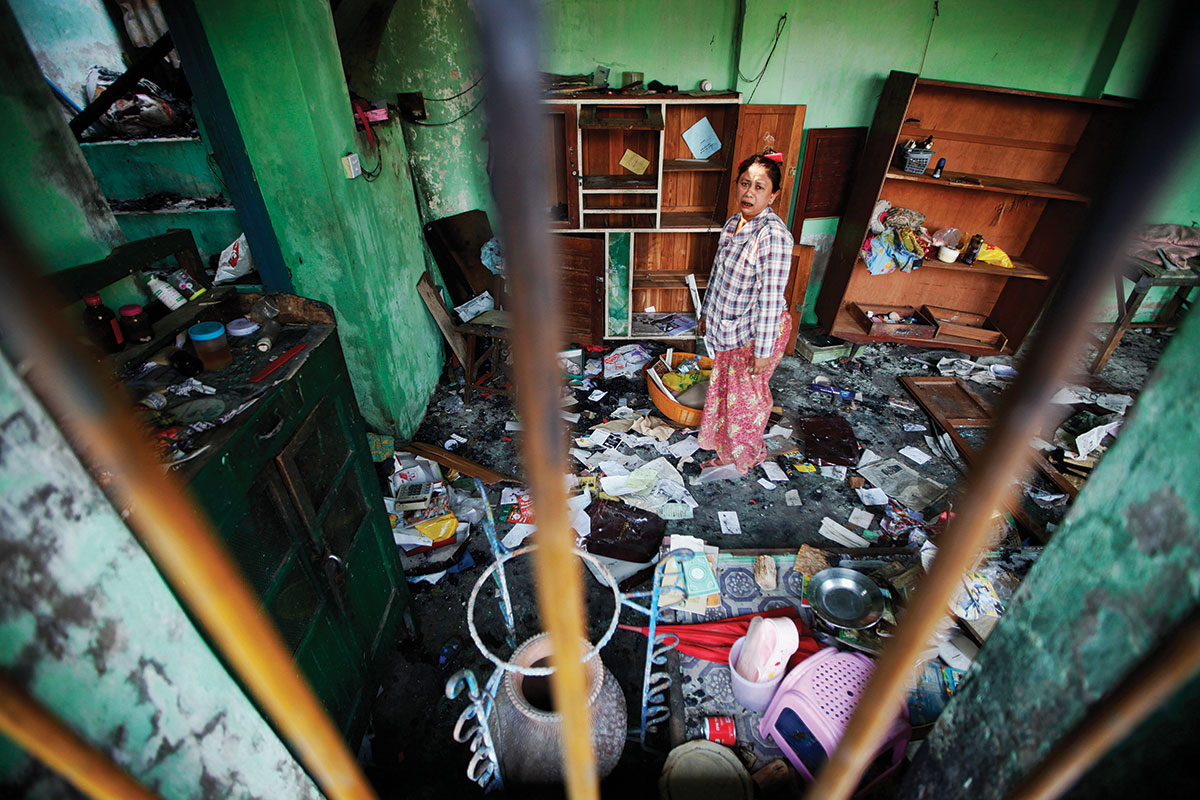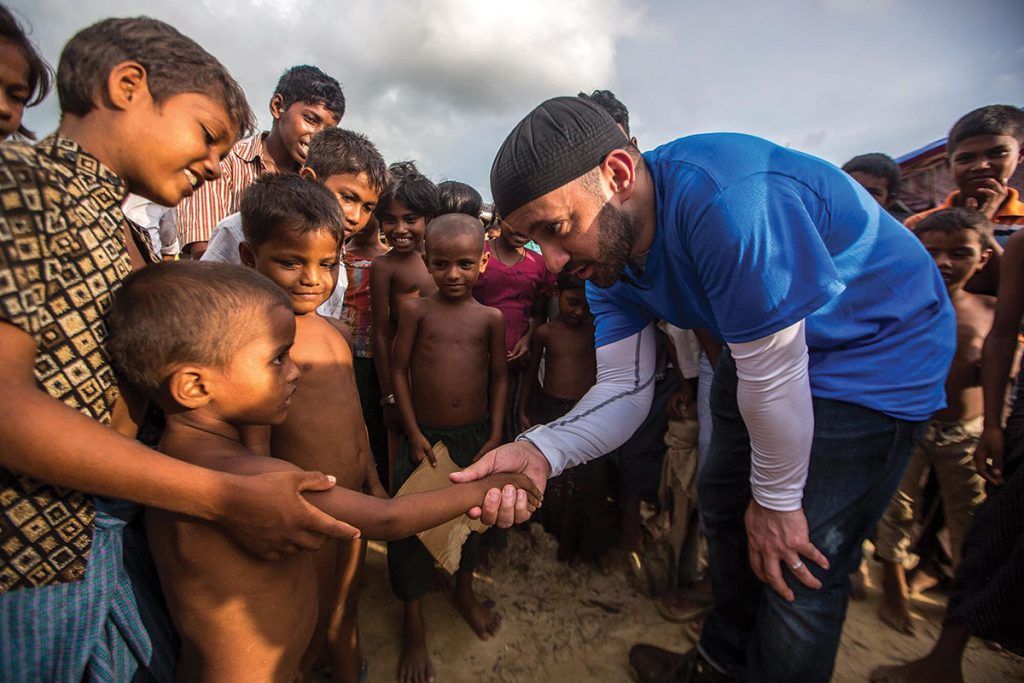The first time I met someone who was impacted by the crisis in Myanmar was in 2012. I work full-time as New York University’s chaplain, and I’m also the director of NYU’s Islamic Center. A young woman had come to one of our prayer services during Ramadan, our month of fasting. Every night for 30 nights, people read a portion of the Quran and keep reading until they’ve completed the whole thing. On one of those nights, I ran into this woman, who was sobbing. It wasn’t like tears you cry when you’re having a spiritual experience—you could tell that she was carrying something with her that was very painful.
I asked her what was going on, and she told me that in her village in Myanmar 14 people had memorized the Quran, and 12 of them had been burned alive; the two who remained didn’t read out loud anymore. It had been a long time, she told me, since she had heard the Quran recited in this way, and that was what was causing her tears. At the time I didn’t have a good understanding of what was going on, so I did some cursory research, and the only real media I could find on the crisis was an article and video by [New York Times columnist] Nicholas Kristoff. Back then it seemed like it wasn’t being spoken about or covered much in the mainstream press. It has picked up since, but considering the numbers involved, this is probably the most devastating conflict that’s taking place in the world right now, and for many years it was also the most overlooked.
Bangladesh opened its doors to the Rohingya in August 2017. When I visited the refugee camps in October, about half a million people had already crossed over, and a thousand more were coming in every day. This is a very large number of people converging on a very small area all at once. Dozens of latrines are being used by people in the tens of thousands, and there is no sewage system. Rainwater mixes with latrine water in which animals bathe. Because there is no steady flow of clean water, the refugees were drinking that water, which had been contaminated with all sorts of things. They had no other choice.
When I spoke to the people in these camps, there wasn’t one who couldn’t tell me that they hadn’t seen loved ones murdered before their eyes—neighbors, friends, family members who had been barricaded into homes and then burned alive. I met people who told me that after their husbands and sons were killed, the Buddhist mobs would come and kill the rest of the villagers by lining them up in rows and slitting their throats, one by one. And then, whether or not the people had already died, they would throw acid on their bodies.

In one of the camps I visited, we were standing on a hill on which you could see into Myanmar. Over the border, a huge cloud of smoke was rising. This was the only time while I was there that there was any commotion in the camps. Throngs of people came to stand near us at the top of the hill in order to see what was taking place; it was clearly bringing back a lot of pain to them, reminding them that they had escaped into safety, while others still in Myanmar were going through what they had gone through.
After their husbands and sons were killed, the Buddhist mobs would come and kill the rest of the villagers by lining them up in rows and slitting their throats, one by one.
When it comes to ethnic cleansing, to genocide, you have to realize that this kind of disdain for another human being’s life doesn’t arise innately. It’s pushed on you from a lot of different channels, all bearing the message that certain people are somehow not worth the same as you. Humanitarian groups working with the displaced within Myanmar are being told that they can’t use the word “Rohingya” if they want to keep distributing goods within the country. Even in Bangladesh, several UK-based groups were told they couldn’t use the word “refugee.” The Myanmar government is controlling the narrative.
When Bangladesh’s border opened up, it had a huge impact on those who saw that they could find a place of safety and move forward. But in reality, what happens from here? A community of a million people is going to require a lot of resources, a lot of infrastructure—schools, hospitals, and so on. Who is going to be responsible for that? And how will the global community respond to the tragedies that are still taking place on the ground?
I don’t think that the situation is beyond repair. It’s just that if you really think about what is killing these people, it’s not the lack of clean water or food or anything of that nature on its own. What’s really killing them is the epidemic of indifference that has afflicted people from all parts of the world.
As told to Emma Varvaloucas
You can donate to Islamic Relief USA’s campaign for the Rohingya at launchgood.com/Aid4Myanmar.
Thank you for subscribing to Tricycle! As a nonprofit, we depend on readers like you to keep Buddhist teachings and practices widely available.
